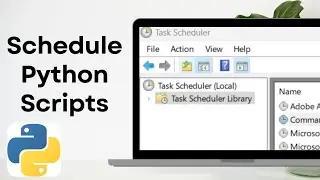Python Tutorial: open() function for beginners
In this video, I will talk about the built-in open function in python.
The open() function in Python is a built-in function that opens a file and returns it as a file object.
With this file object, you can read, create, update, and delete files.
Here are some commonly-used modes for opening files:
'r': open for reading (default)
'w': open for writing, truncating the file first
'a': open for writing, appending to the end of file if it exists.
'x': open for exclusive creation, failing if the file already exists
1. Reading from a File ("sample.txt", "r" mode)
file = open("sample.txt", "r") # Open the file in read mode
content = file.read() # Read the entire content of the file
print(content) # Print the content to the console
file.close() # Close the file
2. Read all lines from the file
Open the file for writing
file = open("sample_lines.txt", "w")
Write sample lines to the file
file.write("Line 1\n")
file.write("Line 2\n")
file.write("Line 3\n")
Close the file
file.close()
Open the file for reading
file = open("sample_lines.txt", "r")
Read all lines from the file
lines = file.readlines()
Close the file
file.close()
Print each line (remove trailing newline character)
for line in lines:
print(line.strip())
3. Appending to a File ("log.txt", "a" mode)
file = open("log.txt", "a") # Open or create the file in append mode
file.write("New log entry: Something happened!\n") # Append the log entry
file.write("Another log entry: Something happened!\n")
file.close() # Close the file
4. Writing to a File ("output.txt", "w" mode)
file = open("output.txt", "w") # Open or create the file in write mode
file.write("Hello, world!\n") # Write "Hello, world!" followed by a newline
file.write("This is a new line.") # Write "This is a new line."
file.write("This is another line.") # Write "This is a new line."
file.close() # Close the file
5. Creating a New File ("new_file.txt", "x" mode)
try:
file = open("new_file.txt", "x") # Attempt to create a new file
file.write("This is a new file.") # Write to the newly created file
file.close() # Close the file
except FileExistsError:
print("File already exists!") # Handle the exception if the file exists
6a. Deleting a file using the os module
import os # Import the os module for file operations
Specify the file path
file_path = "sample.txt"
Check if the file exists before attempting to delete it
if os.path.isfile(file_path):
os.remove(file_path) # Delete the file
print(f"{file_path} has been deleted.")
else:
print(f"Error: {file_path} not found.") # Print an error message
6b. Deleting a file using the pathlib module
from pathlib import Path # Import the Path class from the pathlib module
Create a Path object for the file you want to delete
file_path = Path('path_to_your_file.txt')
Check if the file exists
if file_path.exists():
If the file exists, delete it
file_path.unlink()
#python #pythontutorial #pythonforbeginners































